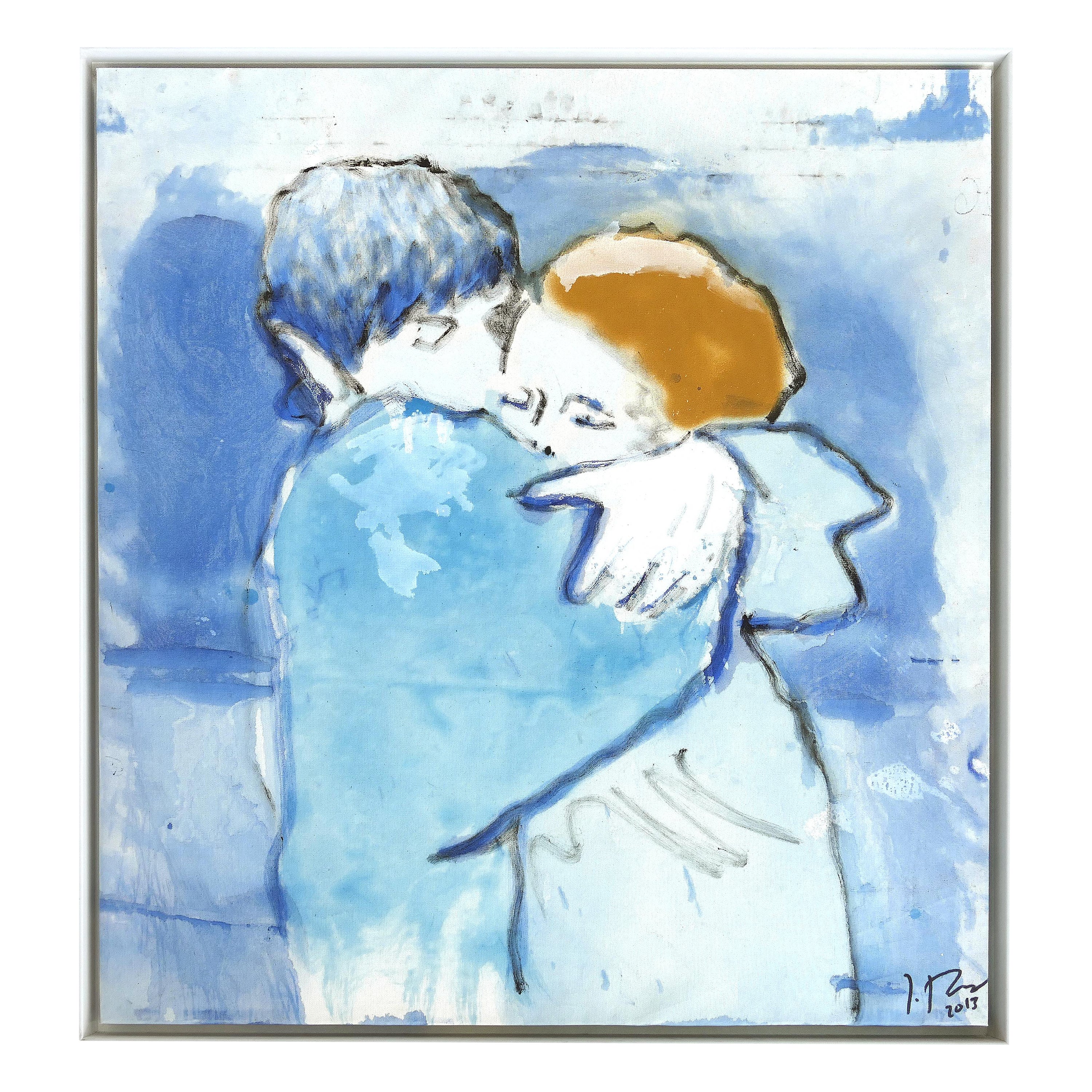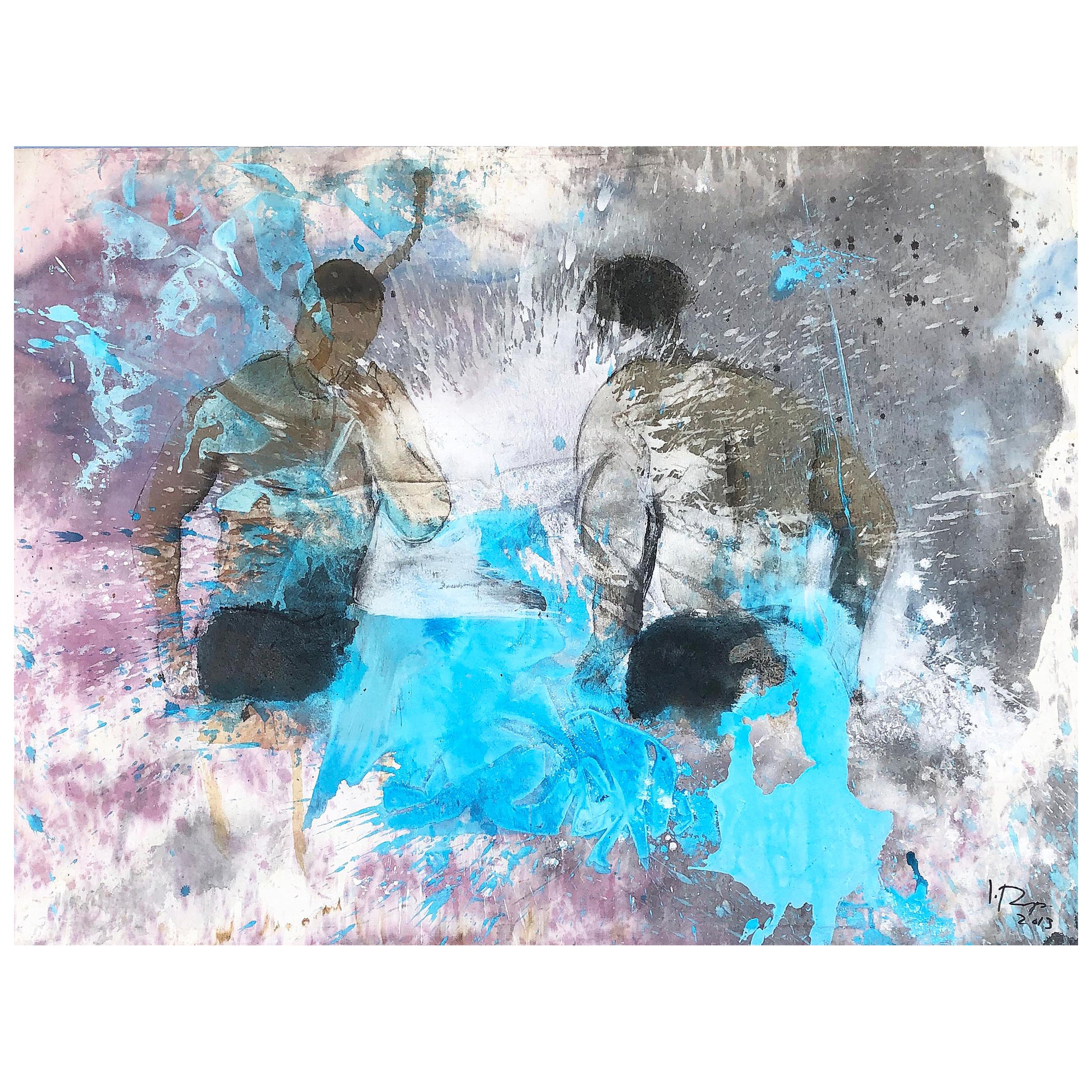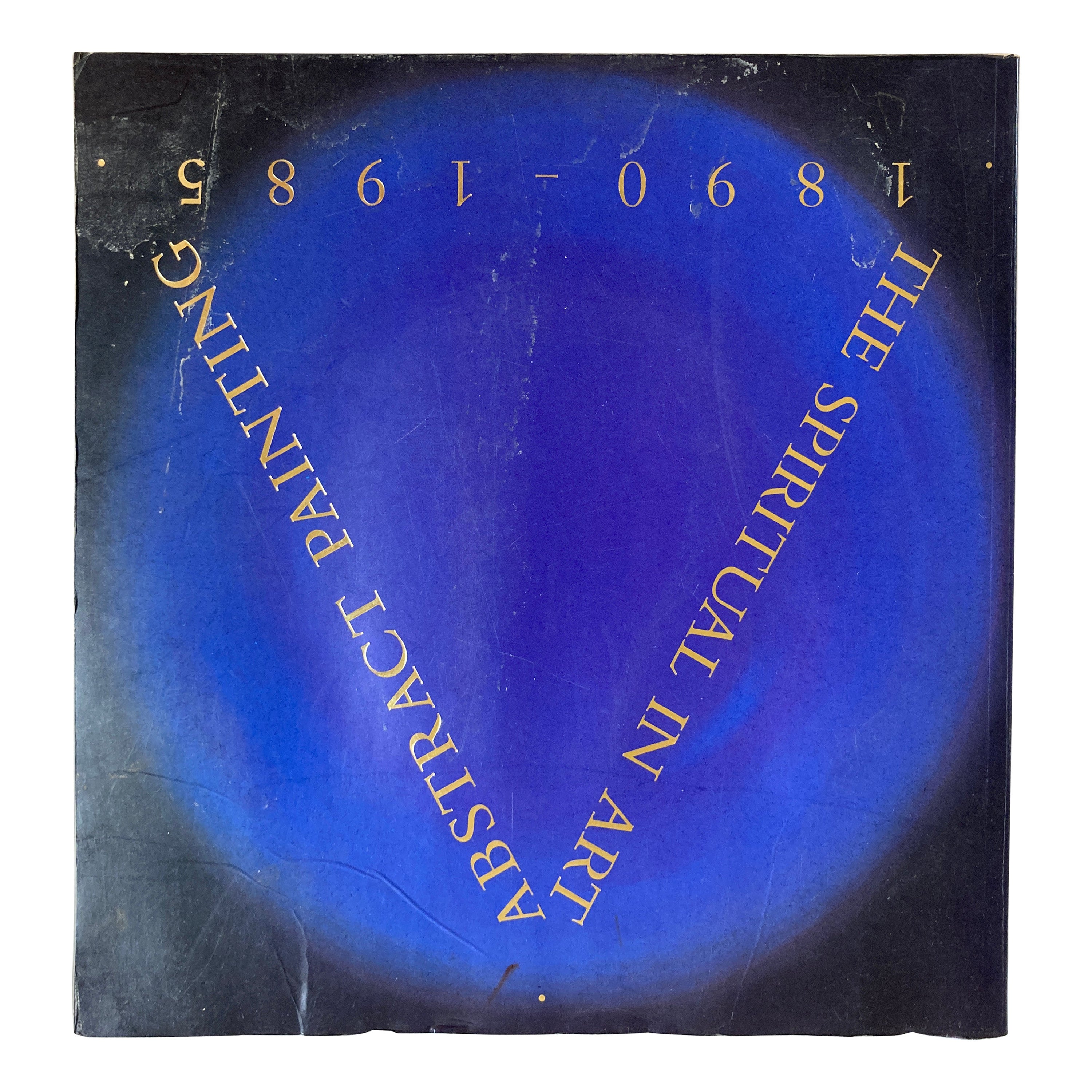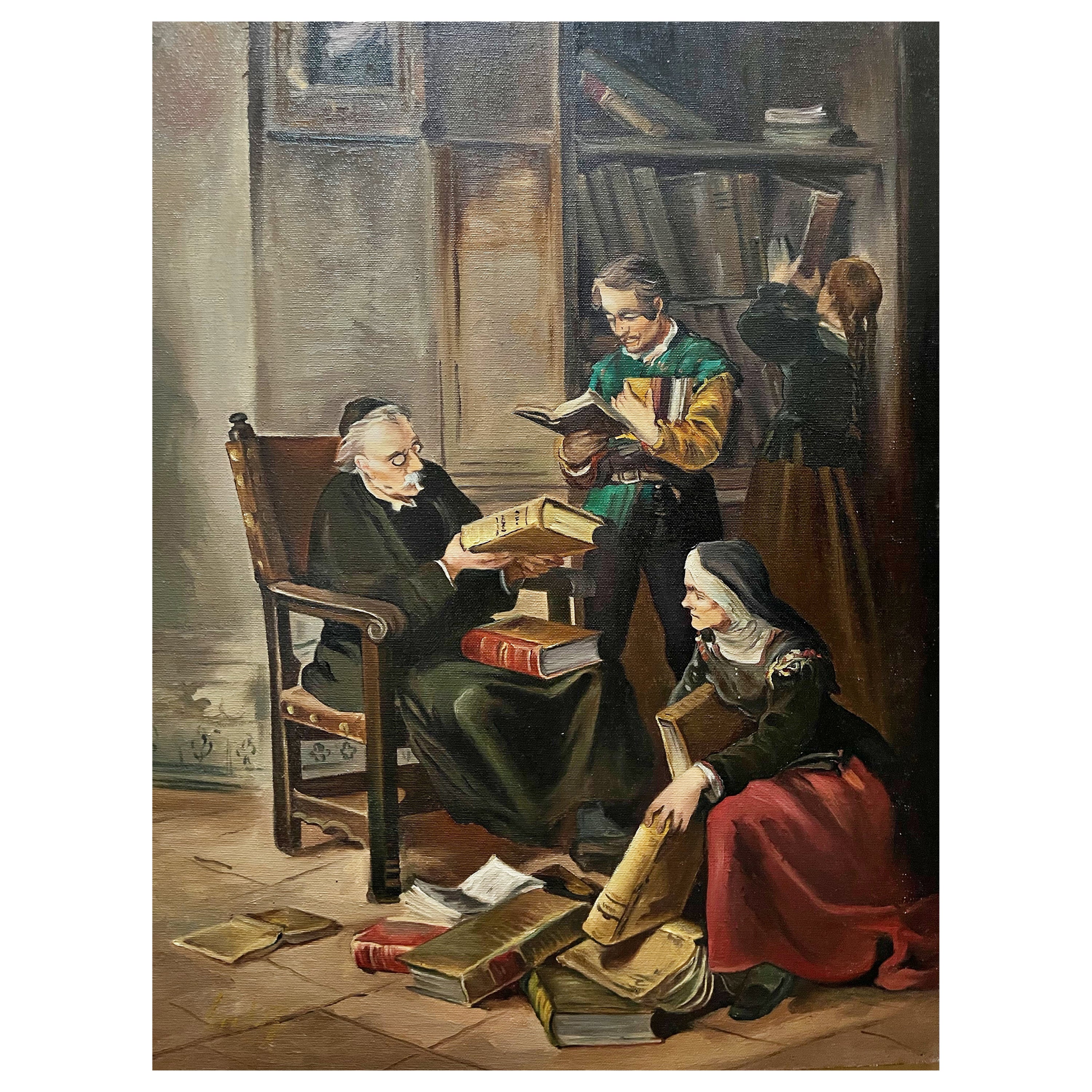Items Similar to "The reaper", Ignacio Diaz Olano, Spain, 1890.
Want more images or videos?
Request additional images or videos from the seller
1 of 7
"The reaper", Ignacio Diaz Olano, Spain, 1890.
About the Item
Oil on canvas, "The reaper", Ignacio Diaz Olano, 1890.
Signed and dated in the lower right corner.
Ignacio Salvador Díaz Ruiz de Olano (Vitoria, 1860- 1937), painter and teacher of painters and better known as Ignacio Díaz, studied at the Academy of Fine Arts in Vitoria as a disciple of Emilio Soubrier Martinez, and in the Llotja de Barcelona (1877 -1880), where he met his teacher Gustavo Bacaristas. After completing his apprenticeship, he returned to his native city, where he collaborated in the weekly "El Danzarín" as a cartoonist, under the pseudonym "Galop". Then, in 1890, he moved to Paris, where he spent four years studying anatomical drawing, and did stage work for the Opera House (some experts maintain that it is not entirely certain that he was in Paris, however) . Upon returning to Spain, he participated in the Artistic and Industrial Exhibition of Vitoria with several works in 1884, when he also opened his own studio in this city, where he carried out an outstanding didactic work until its closure in 1894 to go to Barcelona. In this same year he would travel to Rome, where he lived two years. From 1912 to 1913 he also worked as a drawing teacher at the General and Technical Institute, which he carried out until he reached statutory retirement age in 1932.
Between 1890 and 1925 Díaz participated in multiple editions of the National Fine Arts Exhibitions, obtaining a bronze medal in 1895 and silver in 1899 and 1901. The Prado Museum in Madrid, the Fine Arts in Vitoria and Asturias, the Provincial of Álava, the Town Hall and the School of Arts and Crafts of Vitoria, Private collections, etc. Numerous experts have emphasized that the art of Ignacio Diaz is greatly influenced by the fact that the painter was surrounded by his countrymen and neighbors for a long time. This motivated that most of the production consisted of oils of popular affairs and costumbristas, portraits, landscapes and flowers and still lifes. The oil present is a clear example: it shows a harvester, in a wheat field half-working and with a small sheaf in the hand, looking towards a point outside the picture.
Also, it is possible to appreciate his exceptional abilities of observation and solid drawing formation. In this work, however, there are already advances in his art, fully integrated, the light in his compositions. From the hand of light, and little by little, the color penetrated, which also appears in this painting as totally dominated. His quest for immediacy will bring the luminous stain and the chromatic flash and, over time, he approached the naturalist impressionism without completely entering this style to maintain his personality and its formal differences.
· Size: 108 x 72 cm; 110 x 74 cm (frame). Depth is orientative.
International Buyers – Please Note:
o Import duties, taxes and charges are not included in the item price or shipping charges. These charges are the buyer's responsibility.
o Please check with your country's customs office to determine what these additional costs will be prior to bidding/buying.
o These charges are normally collected by the delivering freight (shipping) company or when you pick the item up - do not confuse them for additional shipping charges.
o The "handling time" is 5 days, depending on the exportation requirements
o Please, note that for those articles that need Export Permits (those older than 100 years), the obtaining of the Permit will be processed without additional expenses, but the period for the obtention of it may vary from 10 to 35 days.
- Creator:Ignacio Díaz Olano (Artist)
- Dimensions:Height: 43.31 in (110 cm)Width: 29.14 in (74 cm)Depth: 1.97 in (5 cm)
- Style:Modern (Of the Period)
- Materials and Techniques:
- Place of Origin:
- Period:
- Date of Manufacture:1890
- Condition:Wear consistent with age and use.
- Seller Location:Madrid, ES
- Reference Number:
About the Seller
4.9
Vetted Seller
These experienced sellers undergo a comprehensive evaluation by our team of in-house experts.
Established in 1985
1stDibs seller since 2017
292 sales on 1stDibs
Typical response time: 21 hours
- ShippingRetrieving quote...Ships From: Madrid, Spain
- Return PolicyThis item cannot be returned.
More From This SellerView All
- Two Characters, Oil on Canvas, Martínez Novillo, Cirilo, SpainBy Cirilo Martínez NovilloLocated in Madrid, ES"Two characters". Oil on canvas. Signed (bottom right corner). MARTÍNEZ NOVILLO, Cirilo (Vallecas, Madrid, 1921 - Madrid, 2008). Cirilo Martínez Novillo was a painter from Madrid who began his training in the capital (School of Arts and Crafts, Libertarian Athenian of the People of Vallecas during the Civil War, School of Painting, Sculpture and Engraving at the National Library), starting at the time of the contest his first artistic works in the world of literature. When the war ended, he was imprisoned for a year, at which time he devoted himself completely to painting. In the 1940s he went from setting up his first studio and focusing his work on figures and still lifes, with his first solo exhibition in 1942, to be known by critics at the end of the decade; the 1950s were very important in his pictorial training, toured Spain and presented his work in several national and international exhibitions, in addition to being from these years when he fits within the "School of Madrid" (collectively presents many works together with others members of the same, such as Álvaro Delgado...Category
20th Century Spanish Other Paintings
MaterialsCanvas
- Heraldic Shield, Oil on Canvas, Torres, a. Spanish School, 1856Located in Madrid, ESHeraldic shield. Oil on canvas. TORRES, A. Spanish school, 1856. Signed and dated. This work shows a heraldic shield on a blue background with different tones, in an oval and fra...Category
Antique 1850s Spanish Neoclassical Revival Paintings
MaterialsOther
- "Wedding of Tethys and Peleus", Oil on Canvas, School of Madrid, SpainLocated in Madrid, ES"Wedding of Tethys and Peleus". Oil on canvas. School of Madrid, 17th century. Corte, Juan de la (Antwerp, circa 1585 - Madrid, 1662) circle. This work describes the weddings of the Nereid Thetis and the prince Peleo, parents of Achilles. It was celebrated on Mount Pelion, and all the deities came, although Eris, the goddess of discord, was not invited. In revenge, she threw a golden apple in which she said "for the most beautiful", that caused the dispute between Athena, Aphrodite and Hera that led to the Trial of Paris, to finally bring about the Trojan War. The banquet is depicted with a composition worked in depth, located in a rich interior of classical architecture illuminated by the light of Apollo, which is situated at the far end of the viewer. At the head of the table, in the foreground, appears Zeus, accompanied by the eagle and Hera, queen of the gods, to his left. In the lower right corner we see a group of satyrs serving the wine, accompanied by rich metal vessels worked with a detailed and descriptive brushstroke. The rest of the gods appear clearly differentiated, with Athena in the foreground to the right and, following an agile rhythm in zigzag, typically baroque, Aphrodite with Eros, Hermes and the grooms, to the left, and to the right Poseidon. Formally it is a work perfectly framed within the 17th century school of Madrid, developed around the court. Thus, we see a sumptuous, allegorical classicist baroque, where the studies of light and color are especially relevant, revealing the exalted and luminous tone typical of this school's maturity. In particular, we can relate this painting to the circle of Juan de la Corte, painter of Flemish origin. We know nothing of his first formation today, for Palomino's assertion of his birth in Spain was documented, quoting in his testament that he was born in Antwerp. Also conserved documents in which the painter declares his apprenticeship in Flanders, where "it exerted his office by many years". For all this he has been associated with Flemish artists of the time who, due to personal knowledge or the study of his works, strongly influenced the configuration of his personal language. We know of his establishment in Spain at least since 1613. His work at the court encouraged him to ask for the place of royal painter who left vacant Bartolomé González...Category
Antique 17th Century Spanish Baroque Paintings
MaterialsCanvas
- Landscapes, Xalapa, Mexico, Pair of Oils on Canvas, Spanish School, Ca 1840Located in Madrid, ESLandscapes, Xalapa, Mexico. Pair of oils on canvas. Spanish school, around 1840. Provenance: Conde de la Cortina collection, Jalapa, Mexico. Couple of landscapes framed within the Spanish school of the first half of the 19th century, with a clear romantic affiliation. Both evidence the knowledge of the Dutch classicist landscape, one of the main influences on the Spanish romantic landscape. Thus, we see compositions in "V", closed on the sides and open in the center, very low horizons that allow a wide development of the sky, spaces built in depth based on successive planes subtly differentiated by light and color, and small figures perfectly integrated into the natural setting. In addition, the skies are scenographic and dramatic, with low clouds behind which the golden light characteristic of the classicist landscape filters. One of the most radical aspects of romantic painting was the attempt to replace large canvases with historical or religious themes with landscapes. They wanted the pure landscape, almost figureless or totally devoid of them, to achieve the heroic significance of history painting. They were based on the idea that human feeling and nature should be complementary, one reflected in the other. In other words, the landscape should arouse emotion and transmit ideas. Thus, landscapers like the author of these canvases tried to express their feelings through the landscape, instead of imitating it. The romantic landscape had two main aspects: the dramatic one, with turbulent and fantastic views, and the naturalistic one, which emphasized images of a peaceful and serene nature. This second conception is what we see embodied in these works; the painter tries to communicate a religious reverence for the landscape, nature in its fullness. In fact, the author's own use of light here conveys a foggy, cloudy, dreamlike atmosphere that invites the viewer to meditate and contemplate himself in the landscape. The romantic landscape is constituted, however, by manifestations of very different types and not comparable to each other; it does not affect all national schools equally, staying more faithful to tradition in schools such as the French or the Dutch. Thus, in this canvas we do not find the grandiose scenery of the British and Germans, the steep mountains or the monumental Gothic ruin...Category
Antique Mid-19th Century South American Neoclassical Revival Paintings
MaterialsOther
- Couple of landscapes. Oil on canvas. Spanish school (BILSO), 20th century.Located in Madrid, ESCouple of landscapes. Oil on canvas. Spanish school (BILSO), 20th century. Signed in the lower corners. Pair of landscapes or notes of rural landscapes with trees, mountains and bu...Category
20th Century Spanish Other Paintings
MaterialsOther
- The attack of the lion, Orientalist. Oil on canvas. 19th century. Signed.Located in Madrid, ESThe attack of the lion, Orientalist. Oil on canvas. XIX century. Signed in the lower left area. Painting located within the orientalist current, highly appreciated in Europe during...Category
Antique 19th Century European Neoclassical Revival Paintings
MaterialsOther
You May Also Like
- Ignacio Burgos "El Abrazo(The Hug)" Mixed Media Painting, SpainBy Ignacio BurgosLocated in Miami, FLIgnacio Burgos "El Abrazo(The Hug)" Mixed Media Painting, Spain Offered for sale is a mixed media on canvas titled "El Abrazo" which translates to "The Hug" from a series of the sa...Category
21st Century and Contemporary Spanish Modern Paintings
MaterialsCanvas, Acrylic
- Antonio De Ignacio PaintingLocated in Houston, TXAntonio De Ignacio (1944 - ) Spanish artist. His works are widely represented in the multiple private and commercial galleries. “Los Esponsales Opus Pictórico N* 5, Otelo” Oil ...Category
Vintage 1970s Spanish Other Paintings
MaterialsCanvas
- Ignacio Burgos Vintage Abstract Mixed Media Painting "Boxers"By Ignacio BurgosLocated in Miami, FLIgnacio Burgos Vintage Abstract Mixed Media Painting "Boxers", 2013 Offered for sale is an overscale mixed-media abstract painting on canvas titled "Boxers" by the Spanish artist I...Category
21st Century and Contemporary Spanish Modern Paintings
MaterialsCanvas, Acrylic
- Spanish School of the 20th Century "the Beach" SignedBy Europa AntiquesLocated in Madrid, ESSpanish school of the 20th century "The Beach" Oil on canvas Measures: 72cm x 52cm Perfect condition Signed.Category
20th Century Spanish Modern Paintings
MaterialsPaint
- The Spiritual in Art Abstract Painting 1890-1985 BookLocated in North Hollywood, CAThe Spiritual in Art: Abstract Painting 1890-1985 Art Book. Judi Freeman, Carel Blotkamp Abbeville Press, 1987 - Art - 435 pages. Paperback. Traces the use of geometric signs by t...Category
20th Century French Modern Books
MaterialsPaper
- Spanish School of the 20th Century "Librarians"By Europa AntiquesLocated in Madrid, ESSpanish School of the 20th century. "librarians" Oil on canvas 61cm x 46cm Perfect condition Signed.Category
20th Century Spanish Modern Paintings
MaterialsPaint
Recently Viewed
View AllMore Ways To Browse
Spanish Provincial
Industrial Wall Light Bronze
Flowers Painted Modern Impressionism
Antique Bronze Picture Light
Diaz Oil Painting
Wheat Sheaf Light
Wheat Still Life
Paint Picture Frame Antique Silver
Aged Bronze Picture Frame
Antique Harvester
Wheat Sheaf Silver
Silver Sheaf Of Wheat
The Met Opera Light
Didactical Flowers
Antique Reaper
Louis Xv Dining Chairs
Antique Victorian Suite
Italian Ebonized Cabinet





